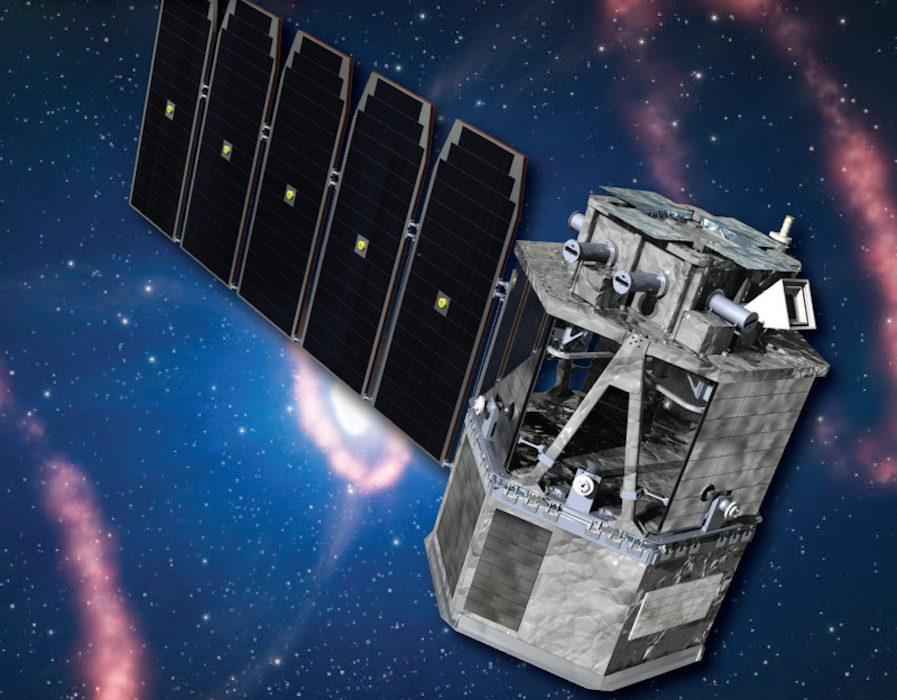
 Credit: UC Berkeley; NASA; NRL; Northrup Grumman
Credit: UC Berkeley; NASA; NRL; Northrup Grumman
COSI
The low-energy gamma-ray region of the electromagnetic spectrum provides important information about how anti-matter is formed near the center of the Milky Way and in other sites, how stars die explosively, and how the chemistry of the Milky Way evolves as a result. Gamma-rays can only be viewed from space, since the earth's atmosphere (thankfully) blocks gamma-rays from reaching the ground, converting them to superluminal particles generating harmless flashes of blue light. Though gamma-ray studies of the Universe have been carried out for about 5 decades, the low-energy gamma-ray band is still the least explored region of the electromagnetic spectrum. This region is so difficult to explore because of especially high gamma-ray background contamination, requiring new techniques and especially sensitive technology to extract a cosmic signal from the background noise. Now a new space observatory, the Compton Spectrometer and Imager, or COSI, has been selected by NASA to explore this important region of the spectrum. COSI (pictured above)is a revolutionary telescope having especially low background and high efficiency in the soft gamma-ray band. COSI will survey the entire sky in the low-energy gamma-ray band (from 0.2-5 MeV), providing the best map of sites in the Galaxy where matter and anti-matter collide and annihilate, as well as constraining the geometry of the gamma-ray sources. COSI is led by the University of California, Berkeley and is expected to be launched in 2025.
Published: November 1, 2021
<
HEA Dictionary ● Archive
● Search HEAPOW
● Other Languages
● HEAPOW on Facebook
● Download all Images
● Education ● HEAD
>

Each week the HEASARC
brings you new, exciting and beautiful images from X-ray and Gamma ray
astronomy. Check back each week and be sure to check out the HEAPOW archive!
Page Author: Dr. Michael F. Corcoran
Last modified Tuesday, 27-Feb-2024 10:13:23 EST


